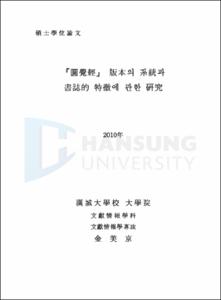『圓覺經』 版本의 系統과 書誌的 特徵에 관한 硏究
= A Study on Systems and Bibliographic Characteristics of the Printed Books of Perfect Enlightenment-sūtra
- Files in This Item:
-
-
Download
 000000791689.pdf
기타 데이터 / 12.5 MB / Adobe PDF
000000791689.pdf
기타 데이터 / 12.5 MB / Adobe PDF
-
Items in Repository are protected by copyright, with all rights reserved, unless otherwise indicated.